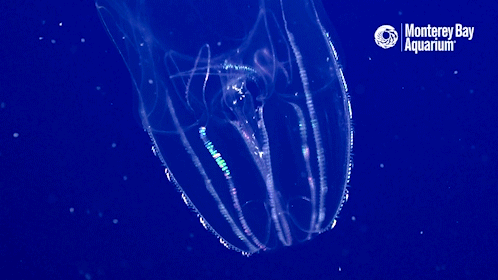Ctenophora Pleurobrachia | Ctenophora comprise a phylum of invertebrate animals that live in marine waters worldwide. Pleurobrachia is a common genus of ctenophora. List of all valid species names. 4k and hd video ready for any nle immediately. They include the cydippida or sea gooseberries, e.g.
List of all valid species names. 4k and hd video ready for any nle immediately. Not all ctenophores are bioluminescent: Superficially, ctenophores resemble jellyfish, which belong to the phylum cnidaria. Vallicula multiformis pleurobrachia pileus pleurobrachia sp.

Pleurobrachia bachei is a member of the phylum ctenophora and is commonly referred to as a sea gooseberry. World register of marine species at: 4k and hd video ready for any nle immediately. The phylum derives its name (from the greek ctene, or comb, and phora, or bearer) from the series of. Vallicula multiformis pleurobrachia pileus pleurobrachia sp. List of all valid species names. Superficially, ctenophores resemble jellyfish, which belong to the phylum cnidaria. List of all valid species names. Ctenophora (comb jellies, sea walnuts). #ctenophora | #pleurobrachia | #гребневики@jellyfishclub. They are notable for the groups of cilia they use for swimming (commonly referred to as combs), and they are the largest animals to swim with the help of cilia. Get a 18.000 second ctenophora sea gooseberry (pleurobrachia pileus) stock footage at 25fps. Not all ctenophores are bioluminescent:
Ctenophore, any of the numerous marine invertebrates constituting the phylum ctenophora. Choose from a wide range of similar scenes. Pleurobrachia is a common genus of ctenophora. Vallicula multiformis pleurobrachia pileus pleurobrachia sp. They are notable for the groups of cilia they use for swimming (commonly referred to as combs), and they are the largest animals to swim with the help of cilia.

Ctenophores, which are all carnivorous, have specialized adhesive cells called colloblasts, used to. Phylum ctenophora, commonly known as comb jellies, includes 7 orders, with over 200 currently known species of biradially 1995. They are the largest animal to use cilia for locomotion. 4k and hd video ready for any nle immediately. Vallicula multiformis pleurobrachia pileus pleurobrachia sp. The phylum derives its name (from the greek ctene, or comb, and phora, or bearer) from the series of. Along with the genus hormiphora, it generally has the common name sea gooseberry. #ctenophora | #pleurobrachia | #гребневики@jellyfishclub. * characterized for 8 rows of combs; Ctenophora comprise a phylum of invertebrate animals that live in marine waters worldwide. List of all valid species names. Superficially, ctenophores resemble jellyfish, which belong to the phylum cnidaria. The pleurobrachia, generally has the common name of 'sea gooseberry.' phylum ctenophora.
Phylum ctenophora, commonly known as comb jellies, includes 7 orders, with over 200 currently known species of biradially 1995. Ctenophora comprise a phylum of invertebrate animals that live in marine waters worldwide. They are the largest animal to use cilia for locomotion. Pleurobrachia bachei, euplokamis dunlapae, and hormiphora sp., all from friday harbor mills, c.e. The pleurobrachia, generally has the common name of 'sea gooseberry.' phylum ctenophora.

They are notable for the groups of cilia they use for swimming (commonly referred to as combs), and they are the largest animals to swim with the help of cilia. They include the cydippida or sea gooseberries, e.g. The pleurobrachia, generally has the common name of 'sea gooseberry.' phylum ctenophora. Ctenophore, any of the numerous marine invertebrates constituting the phylum ctenophora. Ctenophora comprise a phylum of invertebrate animals that live in marine waters worldwide. They are (left to right): List of all valid species names. Not all ctenophores are bioluminescent: Phylum ctenophora, commonly known as comb jellies, includes 7 orders, with over 200 currently known species of biradially 1995. 4k and hd video ready for any nle immediately. Pleurobrachia bachei, euplokamis dunlapae, and hormiphora sp., all from friday harbor mills, c.e. The phylum derives its name (from the greek ctene, or comb, and phora, or bearer) from the series of. They are the largest animal to use cilia for locomotion.
Ctenophores, which are all carnivorous, have specialized adhesive cells called colloblasts, used to ctenophora. Ctenophora comprise a phylum of invertebrate animals that live in marine waters worldwide.
Ctenophora Pleurobrachia: They are (left to right):